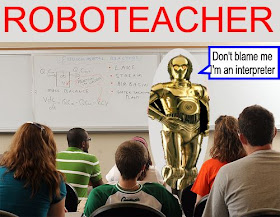IL: State Finds Worse Tool Than PARCC
Well, it's a good day for the SAT marketing team, which has now conned the state of Illinois intoreplacing PARCC with the College Board's flagship Big Standardized Test (or you can follow this link to the state board of education's own website, because the folks at the State Journal-Register have just gone ahead and run the ISBE press release verbatim. Because reporting is hard).
“District and school administrators overwhelmingly agree with ISBE that every high school junior should have access to a college entrance exam, a policy that promotes equity and access and that provides each and every student with greater opportunities in higher education,” State Superintendent of Education Tony Smith said in a statement. “The SAT is aligned with the Illinois Learning Standards and will continue to empower educators to measure college and career readiness.”
Yes, the Illinois State Board of Education is just doing this because everyone asked for it. Also, if you're an anti-CCSS Illinois resident, please note that the SAT can only be aligned with the Illinois Learning Standards if those standards are exactly the same as the Common Core.
Folks indicated that students didn't take the PARCC seriously (which is understandable), though it's not clear why they would take the SAT seriously.On the other hand, it's crystal clear why the College Board would take seriously the opportunity to supplant (not supplement) the PARCC-- big, fat honking market share. Why do all the hard work of selling tests to one customer at a time when you can con a state into buying a round for everyone in the house?
There are, however, several huge problems with this idea.
Some are left-over problems. The SAT can't remotely measure the college-and-career readiness of student whose heart is set on a career in welding or running hotels or the ministry. But neither could the PARCC. But there are other new, special problems that come with substituting the SAT.
First, it's not remotely what the SAT was






















